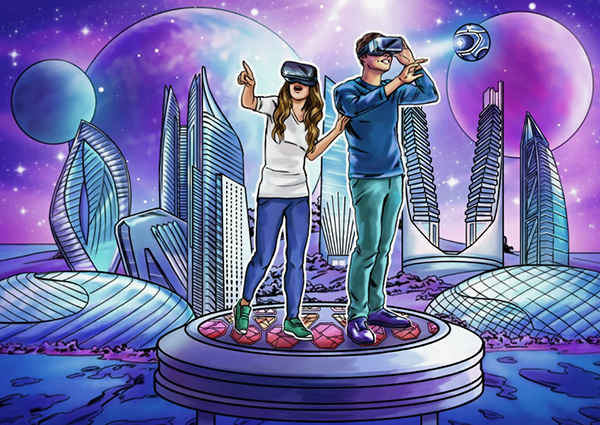What is a defining feature of the Metaverse?
The Metaverse, a concept popularized by science fiction and increasingly realized in digital spaces, encompasses several defining features that distinguish it from traditional online experiences.

Here’s a detailed list along with descriptions in English for Americans, including examples and real-life facts:
Persistent Virtual Environment
In the Metaverse, digital environments persist regardless of whether users are present or not. This means that changes made by one user can affect the experiences of others even when they are not online. For instance, if a user constructs a building in a virtual city, others can see and interact with it even when the original creator is offline. This persistence fosters a sense of continuity and immersion within the virtual space.
Interconnectedness Across Platforms
Unlike conventional online platforms that operate independently, the Metaverse aims to create seamless connections between various digital spaces and experiences. This interconnectedness allows users to transition effortlessly between different virtual environments, from gaming realms to social hubs and educational simulations. For example, a user might start a conversation with friends in a virtual cafe, then seamlessly join them in a multiplayer game without needing to switch applications.
User-Generated Content and Economy
One of the hallmarks of the Metaverse is its emphasis on user-generated content (UGC) and the creation of virtual economies. Users are not just consumers but active participants in shaping the virtual landscape by designing assets, developing experiences, and even establishing businesses within the digital realm. For instance, in platforms like Roblox or Second Life, users can create and sell virtual items, clothing, or even entire virtual real estate properties, generating real-world income.
Avatar Representation and Customization
Avatars serve as the digital personas through which users interact within the Metaverse. Unlike basic profile pictures or usernames, avatars in the Metaverse are fully customizable, allowing users to express their identity and creativity. From choosing appearances, clothing, and accessories to customizing animations and behaviors, users have extensive control over how they present themselves in virtual spaces. Examples include platforms like VRChat or Fortnite, where users can create unique avatars and customize them to reflect their personalities.
Cross-Reality Experiences
The Metaverse blurs the lines between the physical and digital worlds, offering experiences that seamlessly integrate elements of both realities. Augmented reality (AR) and virtual reality (VR) technologies enable users to interact with digital content overlaid onto the physical environment or immerse themselves fully in virtual worlds. This integration enhances the potential for social interaction, entertainment, and productivity across different contexts. For example, applications like Pokemon GO incorporate AR technology to superimpose digital creatures onto real-world locations, encouraging users to explore their surroundings.
Social Interaction and Collaboration
Central to the concept of the Metaverse is the idea of fostering meaningful social connections and collaboration within digital environments. Virtual spaces provide opportunities for individuals to meet, interact, and engage in shared activities regardless of physical distance. From attending virtual concerts and conferences to collaborating on projects or simply hanging out with friends, the Metaverse offers diverse social experiences. Platforms like Rec Room or AltspaceVR facilitate social interaction through features – example: voice chat, multiplayer games, and customizable virtual spaces.
Immersive Multisensory Experiences
As technology advances, the Metaverse aims to deliver increasingly immersive and multisensory experiences that engage users’ senses beyond just sight and sound. Innovations – example: haptic feedback devices, scent emitters, and spatial audio systems enhance the realism and depth of virtual environments, making interactions more compelling and lifelike. For instance, VR experiences like Beat Saber combine visual stimuli with precise haptic feedback and dynamic audio to create an immersive rhythm game that engages multiple senses simultaneously.
These defining features collectively contribute to the unique experience of the Metaverse, offering a glimpse into a future where digital spaces become integral parts of our social, economic, and cultural lives.












